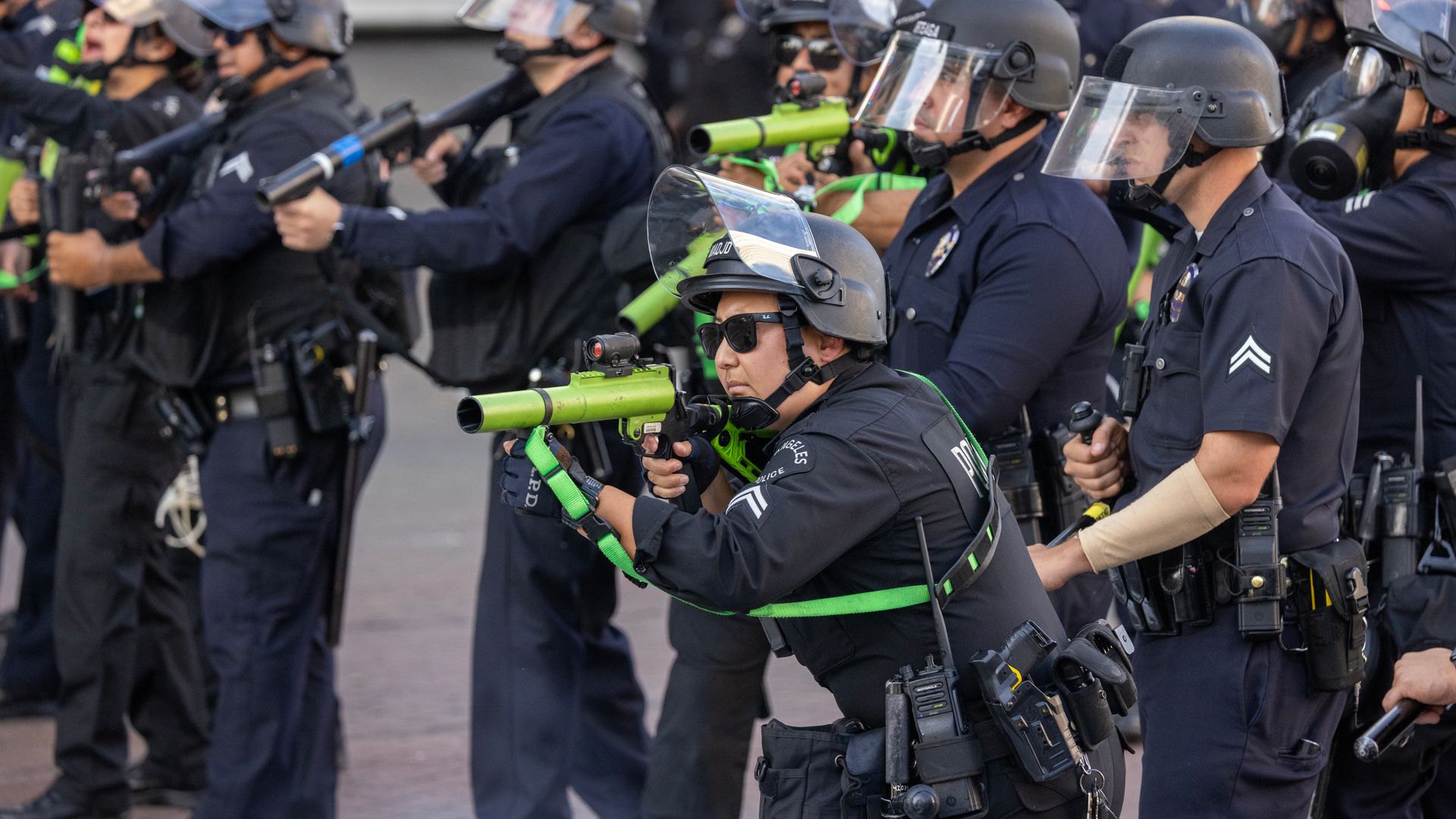
Following protests in Los Angeles, the press is now pushing back against law enforcement. A new lawsuit alleges that police have violated the rights of journalists.
Journalist lawsuit
On Monday, June 16, the LA Press Club and investigative reporting site Status Coup filed a lawsuit against the City of Los Angeles and Chief Jim McDonnell of the Los Angeles Police Department (LAPD).
“Being a journalist in Los Angeles is now a dangerous profession,” states the complaint. “LAPD unlawfully used force and the threat of force against Plaintiffs, their members and other journalists to intimidate them and interfere with their constitutional right to document public events as the press.”
Journalists struck by nonlethal munitions
The lawsuit comes after several members of the press were allegedly injured by police during the protests.
The most well-known incident involved Australian reporter Lauren Tomasi. Video shows a police officer taking aim at her before shooting her with a rubber bullet while she was on camera.
A New York Post photographer also captured the moment he was shot in the head with a rubber bullet. Tony Canham said he was standing just off the freeway when an officer fired at him from about 100 yards away.
New York Times reporter Livia Albeck-Ripka said she was one of the reporters struck by crowd control munitions. Jeremy Lindenfeld, who’s a reporter for Capital & Main, posted on social media that he was shot in the abdomen by police with some kind of projectile.
Police also detained CNN correspondent Jason Carroll while he was on air. Police told him he was not allowed to be in that area and that if he returned, he’d be arrested.
Also live on air, police clashed with ABC News reporter Matt Gutman. An officer could be heard yelling at Gutman as he explained to the officers they were live. One officer said Gutman touched another officer.
The First and Fourth Amendments protect journalists’ rights to film, record audio and be at protests. The Privacy Protection Act of 1980 adds additional protections against searches and seizures of materials for publication.
Often, if journalists are arrested during a protest, it’s for trespassing, obstruction or disorderly conduct.
Neither LAPD nor the city of Los Angeles has commented on the litigation.
LA curfew lifted
After days of protesting and some clashes with police had turned violent, Mayor Karen Bass officially lifted the curfew she had placed on parts of downtown LA once many of the protests had subsided.
“The curfew, coupled with ongoing crime prevention efforts, have been largely successful in protecting stores, restaurants, businesses and residential communities from bad actors who do not care about the immigrant community,” Bass said in a statement. “I will be prepared to reissue a curfew if needed. My priority will continue to be ensuring safety, stability and support in Downtown neighborhoods.”
The mayor began the curfew on June 10 after some of the demonstrators at the protests turned violent. The initial curfew was set from 8 p.m. to 6 a.m. each night, covering about one square mile of the downtown area. On Monday, the mayor shortened the curfew from 10 p.m. to 6 a.m.
contributed to this report.




